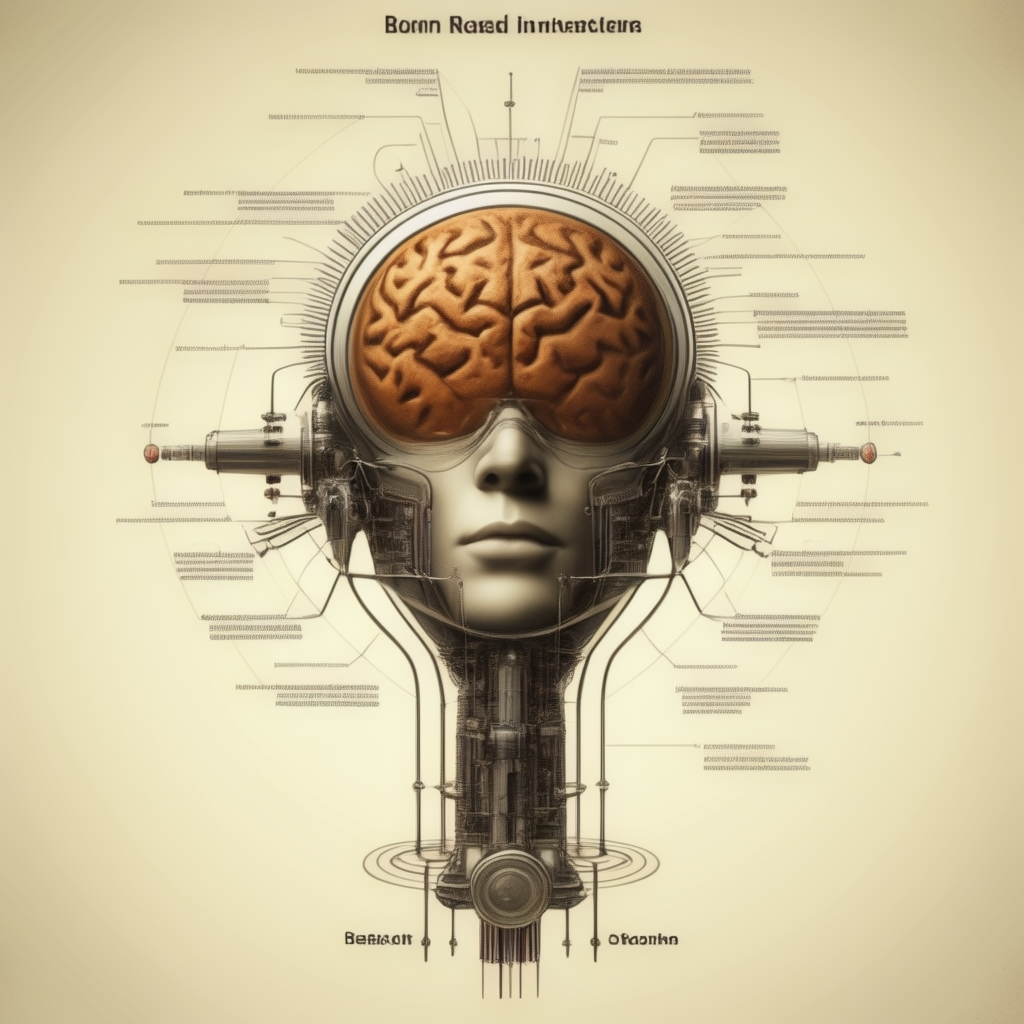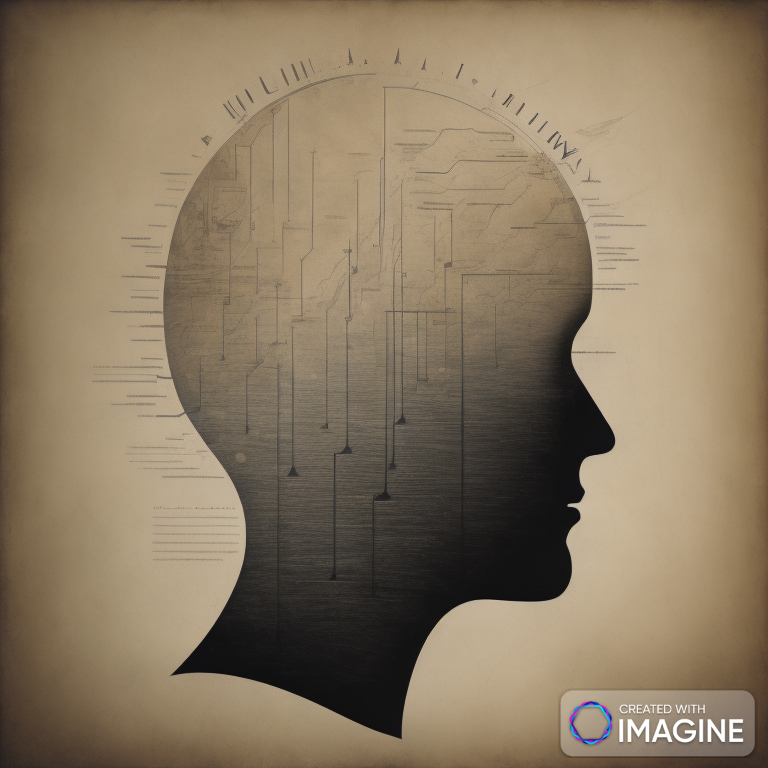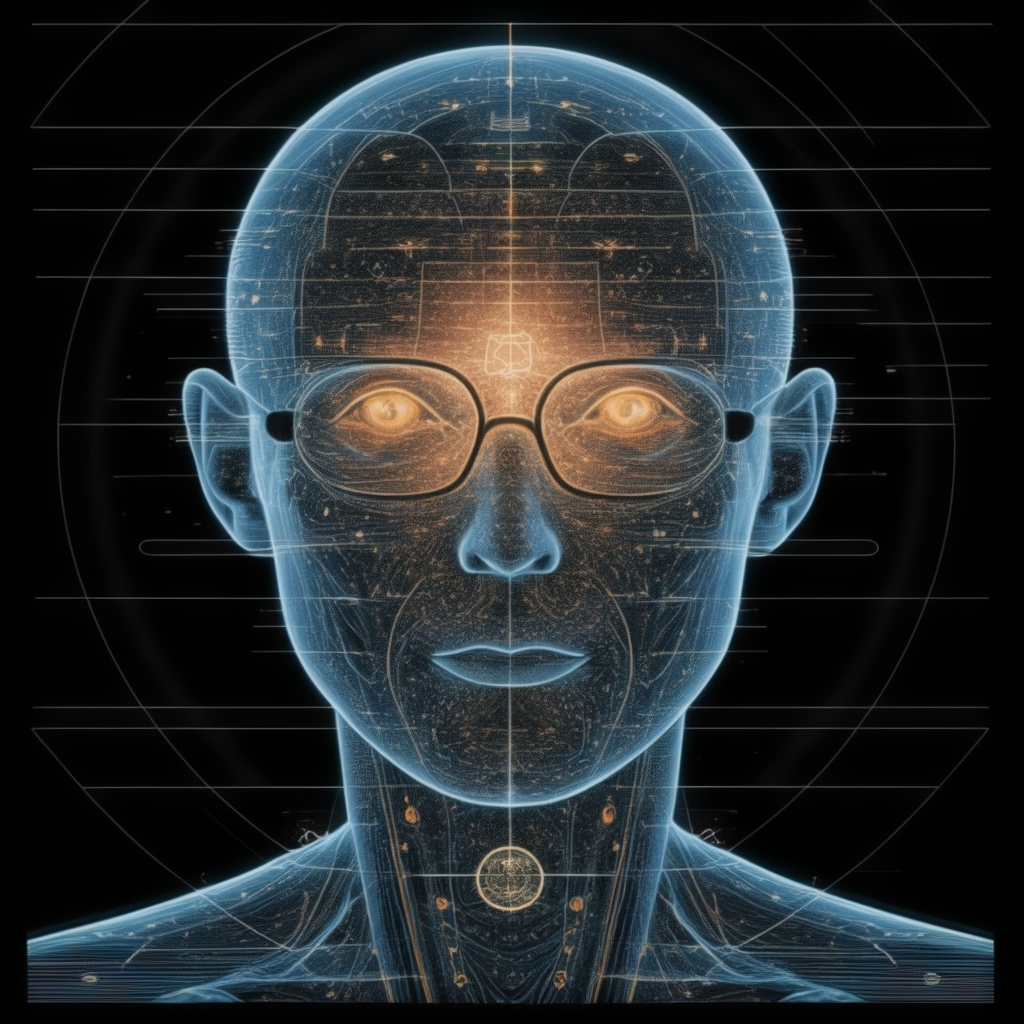Unlocking Cognitive Superpowers: The Science Behind Lightning-Fast Problem Solving
Isaac Newton, one of the most influential scientists in history, once described his approach to solving complex problems in a way that provides deep insight into his cognitive process. He said that when faced with a problem, he would visualize it as an object or a mathematical entity in front of his eyes. He would then focus intensely on it, allowing his mind to dwell on the problem. After some time, he would set the problem aside, and often, the solution would suddenly present itself to him.
This method reveals a powerful cognitive technique, sometimes referred to as “visualization and incubation.” Let’s explore what Newton was trying to convey and delve into the scientific and philosophical underpinnings of this approach.
Visualization and Focus: Bringing Problems to Life
Visualization is the mental technique of creating vivid images or simulations in the mind. Newton’s approach to problem-solving involved transforming abstract problems into concrete, visual objects. By doing this, he could manipulate and explore these mental representations in a more tangible way. Visualization helps in several ways:
- Enhances Understanding: Visualizing a problem can make complex ideas easier to grasp. It allows the mind to explore different facets of the problem as if it were a physical object that could be examined from multiple angles.
- Memory Aid: Visual imagery is easier to remember than abstract concepts, making it simpler to retain and recall the details of a problem.
Intense Focus and Mental Saturation
Newton’s intense focus on the problem allowed him to immerse himself completely in it. This kind of deep, uninterrupted concentration is crucial for solving complex problems because:
- Cognitive Load Management: By focusing intensely, Newton reduced cognitive overload, allowing his brain to process the problem more effectively.
- Deep Work: Engaging in deep work, where one is entirely absorbed in a task, can lead to breakthroughs. It allows the brain to connect disparate ideas and concepts that may not be immediately obvious.
The Power of Incubation
The next step in Newton’s process was to “leave it for some time.” This phase is known as incubation, and it is a critical component of creative problem-solving:
- Subconscious Processing: During the incubation period, the brain continues to work on the problem subconsciously. It makes connections and tests solutions without the individual being actively aware of it.
- Mental Relaxation: By stepping away from the problem, mental fatigue is reduced, and the mind is free to explore alternative solutions. This often leads to the “aha!” moment, where the solution seems to pop up out of nowhere.
Theoretical Underpinnings: Insight and Problem-Solving
Newton’s description aligns with modern theories of insight and problem-solving in cognitive psychology:
- Insight Learning: This is a sudden realization of a problem’s solution, often after a period of incubation. It‘s the “Eureka!” moment, where the brain, after working on a problem in the background, suddenly arrives at the answer.
- Dual-Process Theory: This theory suggests that our brains operate in two modes: fast, intuitive thinking (System 1) and slow, deliberate thinking (System 2). Newton’s process likely involved both systems. The initial focus was System 2 in action, and the sudden solution emerging after incubation was System 1.
Philosophical Implications: The Nature of Thought and Creativity
Newton’s method also touches on deeper philosophical questions about the nature of thought and creativity:
- Mind-Body Interaction: Newton’s visualization technique suggests a strong interaction between mental imagery and cognitive processes. This raises questions about how the mind interacts with abstract concepts and whether these visualizations are a bridge between thought and reality.
- Creativity and Innovation: Newton’s approach exemplifies the essence of creative thought—transforming abstract problems into something more tangible and manipulating them until a solution emerges.
Modern Applications and Insights
Newton’s method is still relevant today, especially in fields requiring high levels of creativity and problem-solving:
- Engineering and Design: Visualization techniques are crucial in design and engineering, where abstract concepts need to be translated into concrete solutions.
- Scientific Research: Many scientific breakthroughs come from a deep focus on a problem followed by a period of relaxation or distraction, allowing the subconscious mind to work on the solution.
The Cognitive Mastery of Problem-Solving: Insights from Newton and Beyond
Isaac Newton’s approach to solving problems provides a window into the cognitive processes that drive innovation and discovery. By visualizing problems as tangible objects and focusing intensely on them, Newton harnessed the power of both conscious and subconscious thought. His method, however, is not unique to him. Many great minds throughout history have used similar techniques to unlock new insights. In this expanded discussion, we will delve into the scientific principles behind these methods, explore stories of other remarkable individuals, and examine how modern cognitive science and psychology explain these processes.
Visualization and Cognitive Representation
Visualization is one of the oldest and most powerful tools in problem-solving. When Newton visualized a problem as a physical object, he was essentially creating a cognitive model that he could manipulate mentally. This approach is deeply rooted in how the brain processes information:
- Mental Imagery: The brain is capable of creating detailed images, or simulations, that mimic real-world perception. These mental images allow individuals to “see” and interact with abstract concepts as if they were real, making complex problems more accessible.
- Spatial Reasoning: Newton’s method likely involved spatial reasoning, where he could mentally rotate, manipulate, and explore the problem from different angles. This ability is crucial in fields like mathematics, engineering, and physics, where abstract concepts must be visualized to be understood.
Stories of Other Great Minds
Newton was not the only thinker to use such methods. Many other historical figures have reported similar experiences:
- Albert Einstein: Einstein often used what he called “thought experiments” to explore complex scientific problems. For example, he famously imagined himself riding alongside a beam of light, which eventually led him to develop the theory of relativity. Einstein’s method was a form of visualization where he played out scenarios in his mind to explore their implications.
- Nikola Tesla: Tesla was known for his extraordinary ability to visualize his inventions in precise detail before building them. He claimed that he could see his designs so clearly in his mind that he could test and refine them without ever needing to draw a single blueprint.
- Richard Feynman: The Nobel Prize-winning physicist used visualization extensively in his work. Feynman would often picture particles and fields in his mind, which allowed him to develop intuitive understandings of complex physical phenomena.
The Science Behind Visualization and Incubation
Modern cognitive science provides a framework for understanding these processes:
- Dual Process Theory: The brain operates in two primary modes—System 1 (fast, intuitive thinking) and System 2 (slow, deliberate thinking). Visualization often engages both systems. Intense focus engages System 2, while incubation periods allow System 1 to work in the background, connecting ideas and forming insights.
- Default Mode Network (DMN): During periods of rest or distraction (incubation), the brain’s DMN becomes active. This network is responsible for mind-wandering, daydreaming, and subconscious processing. It’s during this time that the brain makes unexpected connections, leading to sudden insights.
- Neuroplasticity: Visualization and focused thought can reshape the brain’s neural pathways. By repeatedly engaging in these practices, individuals can strengthen connections in the brain that are crucial for problem-solving and creative thinking.
Techniques for Enhancing Problem-Solving Abilities
Drawing from these principles, several techniques can be employed to enhance cognitive abilities and problem-solving skills:
- Mind Mapping: This involves creating a visual representation of ideas and their connections, much like Newton’s mental imagery. It helps in organizing thoughts and seeing relationships between different concepts.
- Visualization Exercises: Regular practice of visualization can strengthen the brain’s ability to create and manipulate mental images. Athletes, for example, use visualization to improve performance, imagining themselves executing perfect movements.
- Meditation and Mindfulness: These practices enhance focus and allow the mind to enter a state of deep concentration, similar to what Newton described. Meditation also improves the brain’s ability to engage in focused thought and to disconnect from distractions.
- Incubation and Breaks: Deliberately taking breaks from a problem allows the subconscious mind to work on it. This is why many people experience breakthroughs after stepping away from a task.
- Journaling and Reflective Writing: Writing about problems or ideas can externalize thoughts, making them easier to analyze and manipulate. It also creates a record of thoughts that can be revisited and refined over time.
Evolutionary and Environmental Factors
The ability to solve complex problems is deeply rooted in evolution:
- Survival Mechanisms: Early humans who could visualize and plan were more likely to survive. This ability to think ahead and solve problems conferred a significant evolutionary advantage.
- Environmental Stimulation: Environments rich in stimuli (like diverse ecosystems) likely fostered the development of advanced cognitive abilities. This is mirrored in modern education and upbringing, where exposure to varied experiences can enhance problem-solving skills.
Genetic and Biological Influences
Certain genetic and biological factors can also play a role in cognitive sharpness:
- Genetic Predispositions: Some individuals may be genetically predisposed to certain cognitive abilities, such as spatial reasoning or memory. However, these abilities can be developed and enhanced through practice and learning.
- Nutrition and Brain Health: Proper nutrition is crucial for cognitive function. Nutrients like Omega-3 fatty acids, antioxidants, and vitamins support brain health, while hydration ensures optimal brain function. The gut-brain axis also plays a significant role; a healthy gut can lead to improved mood and cognitive performance.
- Sleep and Rest: Adequate sleep is essential for memory consolidation and cognitive processing. During sleep, the brain processes and organizes information, which is crucial for problem-solving.
Learning Abilities, Disabilities, and Natural Aptitudes
The ways individuals learn and process information can vary widely:
- Learning Disabilities: Conditions like dyslexia or ADHD can impact how individuals approach problem-solving. However, these conditions also come with unique strengths. For example, individuals with ADHD may excel in creative thinking due to their ability to think divergently.
- Natural Aptitudes: Some people naturally excel in certain types of problem-solving, whether it be logical reasoning, verbal communication, or artistic creativity. Recognizing and developing these aptitudes can lead to greater cognitive precision.
Isaac Newton’s method of solving problems by visualizing them as tangible objects is a testament to the power of the human mind. This approach, combined with intense focus, incubation, and the right environmental and biological factors, can lead to profound insights and innovations. By understanding and harnessing these techniques, we can improve our cognitive abilities, solve complex problems, and innovate in ways that were previously unimaginable. Whether through visualization, mindfulness, or understanding our genetic predispositions, the path to cognitive mastery is one of continuous learning, practice, and exploration.
The Science of Problem Solving: Techniques, Strategies, and the Path to Cognitive Mastery
Problem-solving is a universal challenge, but it is also an area where human cognition shines. From basic daily tasks to complex scientific inquiries, the process of solving problems relies on cognitive skills that have been honed through evolution, shaped by environmental factors, and refined through practice. Below, we explore the best techniques and strategies, backed by science and empirical evidence, for achieving absolute precision in problem-solving. These methods are grounded in research and are as reliable as the laws of the universe when applied correctly.
Foundational Principles of Problem-Solving
1. Understanding the Problem
- Clarity: The first step in problem-solving is to ensure you fully understand the problem. This means breaking it down into smaller, more manageable parts and identifying the core issue.
- Defining the Goal: Clearly define what success looks like. A well-defined goal helps in creating a focused strategy.
- Root Cause Analysis: Techniques like the 5 Whys or Fishbone Diagram can help identify the root cause of the problem rather than just addressing symptoms.
2. Visualization Techniques
- Mental Models: As used by Newton, creating mental models or visualizing the problem can help you manipulate and explore it in a cognitive space. This technique taps into the brain’s natural ability to process visual information.
- Mind Mapping: A visual representation of ideas and their connections can help in organizing thoughts and exploring the relationships between different elements of a problem.
3. Critical and Analytical Thinking
- Deductive Reasoning: Start with a general statement or hypothesis and move toward a specific conclusion. This logical approach is fundamental in fields like mathematics and science.
- Inductive Reasoning: This involves making broad generalizations based on specific observations. It’s essential in empirical sciences where patterns must be observed and tested.
- Systems Thinking: This is the ability to understand and analyze the interconnected parts of a system, which is crucial in complex problem-solving scenarios.
4. Creative Thinking
- Divergent Thinking: Generating multiple solutions to a problem is a hallmark of creative thinking. Techniques like brainstorming or SCAMPER (Substitute, Combine, Adapt, Modify, Put to another use, Eliminate, Reverse) encourage out-of-the-box thinking.
- Convergent Thinking: Once multiple solutions are generated, convergent thinking helps in narrowing down to the most effective one.
5. Focus and Concentration
- Mindfulness Meditation: Research has shown that mindfulness meditation improves focus, cognitive flexibility, and problem-solving abilities. It trains the mind to maintain attention and reduce distractions.
- Pomodoro Technique: This time-management method involves working in short, focused bursts (usually 25 minutes) followed by short breaks. It helps in maintaining high levels of concentration and avoiding mental fatigue.
Advanced Techniques for Cognitive Mastery
1. Incubation and Subconscious Processing
- Incubation Period: Taking breaks and allowing the mind to rest can lead to insights. The subconscious mind continues to work on the problem during these periods, often leading to sudden realizations or “eureka” moments.
- Default Mode Network (DMN): Engaging the DMN, typically during rest, allows for the consolidation of information and connection of disparate ideas, leading to innovative solutions.
2. Neuroplasticity and Brain Training
- Cognitive Exercises: Regular engagement in cognitive tasks such as puzzles, strategic games, or new learning experiences (e.g., languages or musical instruments) enhances neuroplasticity, improving problem-solving capabilities over time.
- Growth Mindset: Adopting a growth mindset, as proposed by Carol Dweck, involves believing that abilities and intelligence can be developed. This mindset encourages persistence and resilience in the face of challenges.
3. Sleep and Cognitive Function
- Memory Consolidation: Sleep is critical for the consolidation of memories and learning. During sleep, particularly REM sleep, the brain processes and integrates new information, which is essential for solving complex problems.
- Quality Sleep: Ensuring sufficient and high-quality sleep can significantly improve cognitive functions, including problem-solving, attention, and creativity.
4. Environmental and Biological Factors
- Nutritional Support: The brain requires a constant supply of nutrients, particularly glucose, Omega-3 fatty acids, antioxidants, and vitamins. A diet rich in these nutrients supports cognitive function and problem-solving abilities.
- Physical Exercise: Regular physical activity enhances blood flow to the brain, promoting neurogenesis (the growth of new neurons) and improving cognitive functions such as memory, attention, and problem-solving.
- Hydration and Brain Function: Dehydration can impair cognitive functions. Ensuring adequate hydration is crucial for maintaining mental clarity and sharpness.
Strategies Backed by Science and Empirical Evidence
1. Heuristics and Algorithms
- Heuristic Methods: Heuristics are mental shortcuts that can simplify decision-making processes. While they may not always lead to perfect solutions, they are effective for making quick, satisfactory decisions in complex situations.
- Algorithmic Thinking: An algorithm is a step-by-step procedure for solving a problem. In problem-solving, developing and following algorithms can lead to precise and repeatable solutions.
2. Scientific Method
- Hypothesis Testing: Formulating hypotheses and testing them through experimentation is a cornerstone of the scientific method. This approach ensures that solutions are grounded in empirical evidence and can be replicated.
- Iterative Process: Problem-solving is often an iterative process, where solutions are refined and improved over time through cycles of testing, feedback, and adjustment.
3. Learning and Knowledge Application
- Deliberate Practice: Focused, repetitive practice aimed at improving specific skills is essential for mastery. Deliberate practice involves setting clear goals, seeking feedback, and constantly challenging oneself.
- Knowledge Transfer: Applying knowledge from one domain to solve problems in another is a powerful strategy. This process, known as analogical reasoning, allows for creative solutions by drawing parallels between seemingly unrelated fields.
Cognitive Mastery and Real-World Applications
1. Historical Examples of Cognitive Mastery
- Thomas Edison: Edison’s approach to invention was based on iterative experimentation. His persistence and systematic testing of ideas exemplify the power of the scientific method in problem-solving.
- Marie Curie: Curie’s groundbreaking research on radioactivity was guided by her meticulous application of the scientific method and her ability to think creatively about the implications of her findings.
2. Modern Applications in Technology and Business
- Silicon Valley Innovation: The rapid development of technology in Silicon Valley is driven by a culture of experimentation, failure, and iteration. The application of problem-solving techniques like design thinking has led to groundbreaking innovations in technology.
- Agile Methodology: In software development, the Agile methodology emphasizes iterative progress, collaboration, and adaptability. This approach has revolutionized how complex problems are tackled in the tech industry.
The pursuit of cognitive mastery in problem-solving is a journey that involves understanding and applying a wide range of techniques, strategies, and scientific principles. From the visualization techniques of Newton to the systematic methods of modern innovators, the key to success lies in harnessing the full potential of the human mind. By integrating knowledge from neuroscience, psychology, nutrition, and beyond, we can develop the cognitive tools needed to solve even the most complex problems with precision, focus, and creativity.
Isaac Newton’s approach to problem-solving, through visualization, intense focus, and incubation, offers a timeless method for tackling complex problems. His technique emphasizes the power of mental imagery and the importance of allowing the subconscious mind to contribute to finding solutions. This process is not only relevant in scientific endeavors but also in everyday problem-solving, where creativity and deep thinking are required. Newton’s legacy, therefore, is not just in his discoveries but in the way he approached the mysteries of the universe—an approach that continues to inspire and guide thinkers today.






